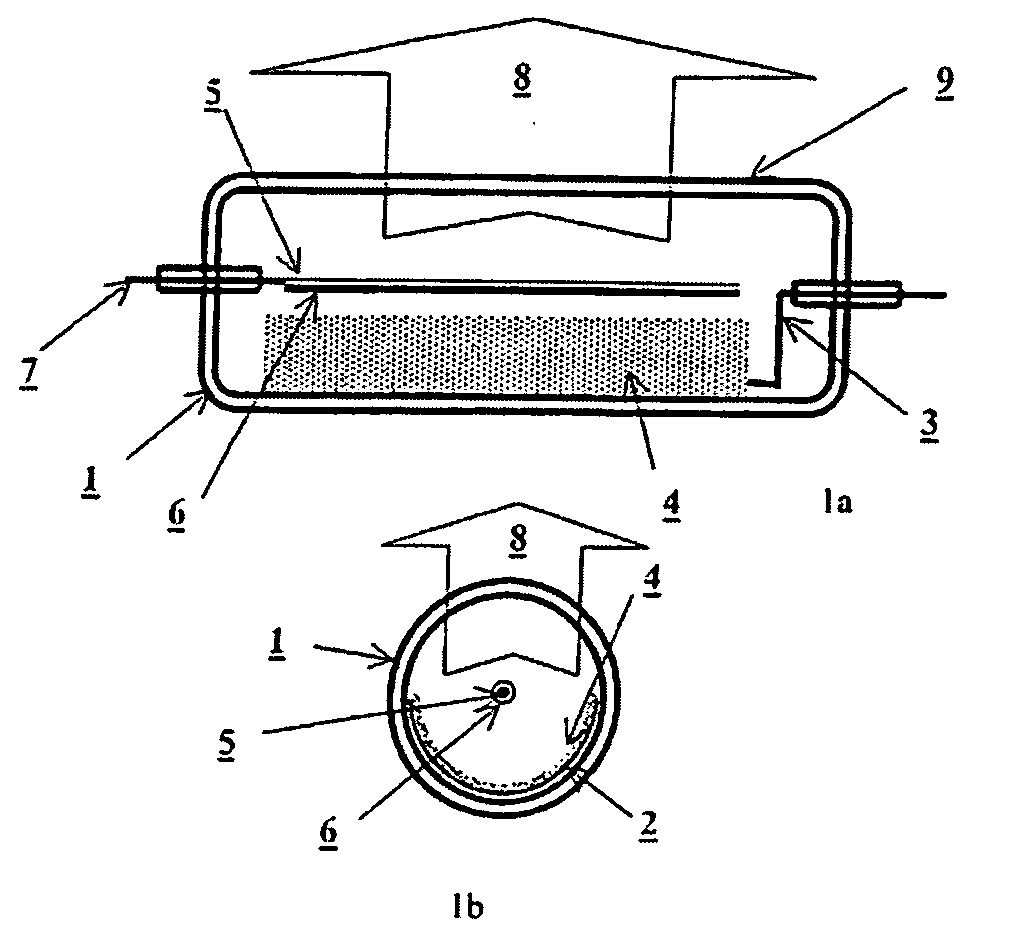Cathodoluminescent light source
a technology of cathodoluminescent light source and cathodoluminescent light source, which is applied in the direction of discharge tube luminescnet screen, electric discharge lamp, electrical apparatus, etc., can solve the problems of low efficiency of electric energy conversion into visible light in such devices, poor application restrictions of such devices, and use of mercury therein. , to achieve the effect of high electric energy conversion into ligh
- Summary
- Abstract
- Description
- Claims
- Application Information
AI Technical Summary
Benefits of technology
Problems solved by technology
Method used
Image
Examples
Embodiment Construction
[0021] A cathodoluminescent lamp according to the invention may be shaped as a cylinder-shaped thermionic diode schematically shown in FIG. 1. To this end, first a cylinder-shaped glass bulb 1 is prepared, whereupon a layer 2 of aluminum or some other metal featuring good light-reflecting properties is applied to a portion of the inside cylinder-shaped bulb surface. Said reflecting metal layer is electrically connected to an electrode brought to the outside surface of a bulb 3. A layer 4 of an electron-excited phosphor is applied to said reflecting metal layer 2. The bulb 3 accommodates a field-emission cathode appearing as a cylinder-shaped metal wire 5 coated with a layer of a carbon material 6 featuring high-efficiency field electron emission. It is expedient to use as said carbon material a film consisting of a nanometric-size graphite crystallites and carbon nanotubes as taught in WO00 / 40508 A1. The cathode is reasonable to be arranged lengthwise the bulb longitudinal axis and ...
PUM
 Login to View More
Login to View More Abstract
Description
Claims
Application Information
 Login to View More
Login to View More - R&D
- Intellectual Property
- Life Sciences
- Materials
- Tech Scout
- Unparalleled Data Quality
- Higher Quality Content
- 60% Fewer Hallucinations
Browse by: Latest US Patents, China's latest patents, Technical Efficacy Thesaurus, Application Domain, Technology Topic, Popular Technical Reports.
© 2025 PatSnap. All rights reserved.Legal|Privacy policy|Modern Slavery Act Transparency Statement|Sitemap|About US| Contact US: help@patsnap.com



